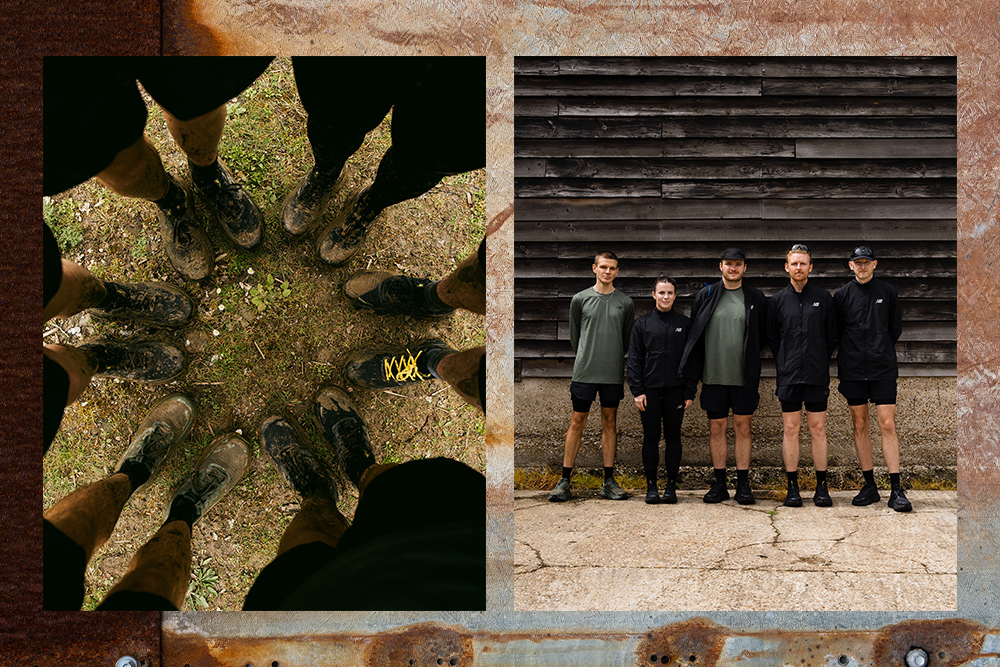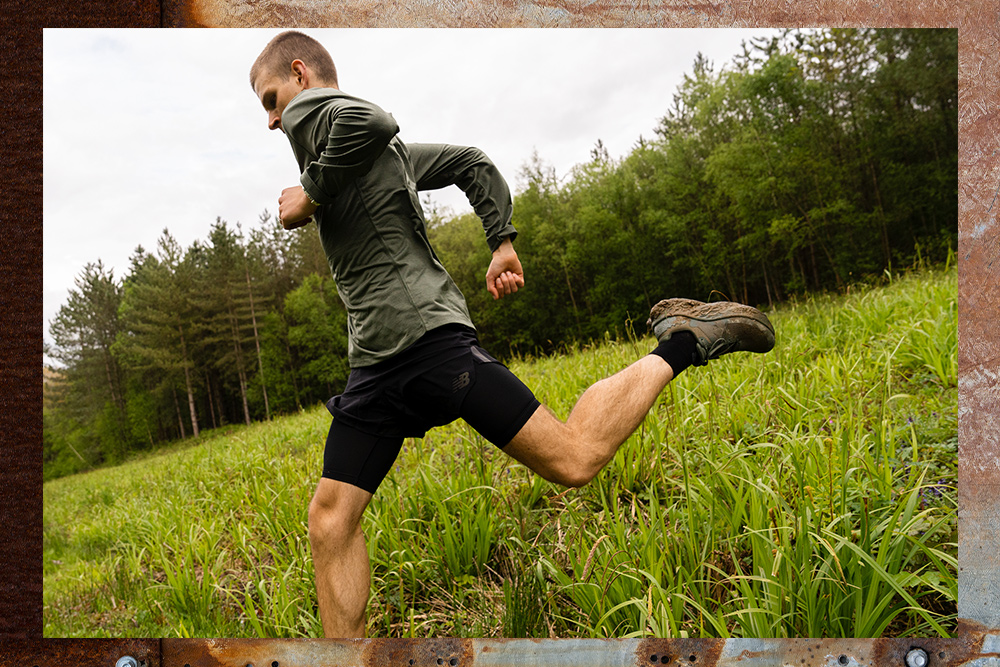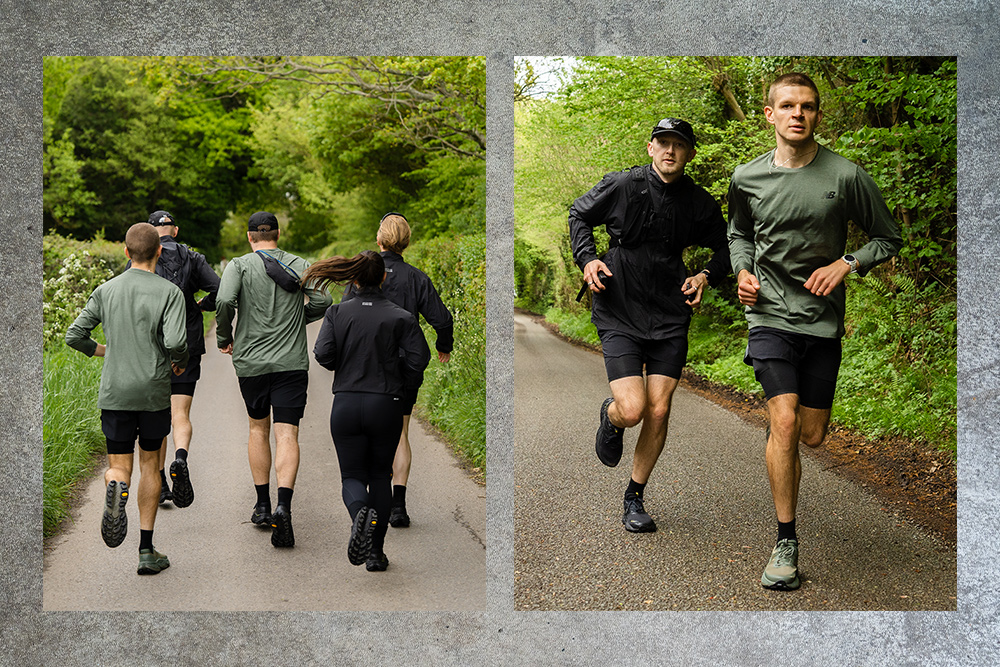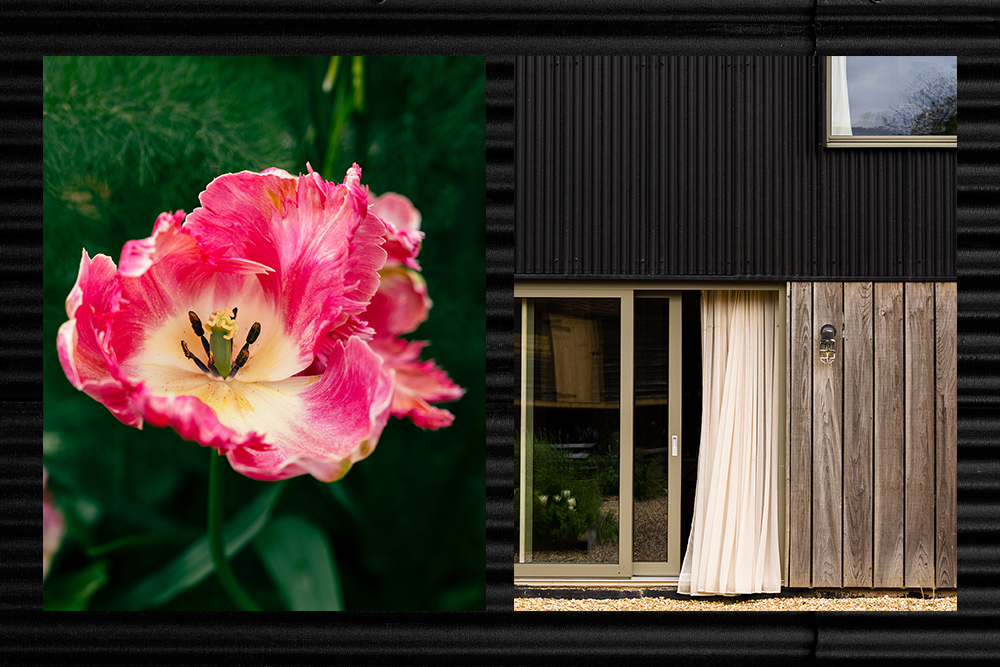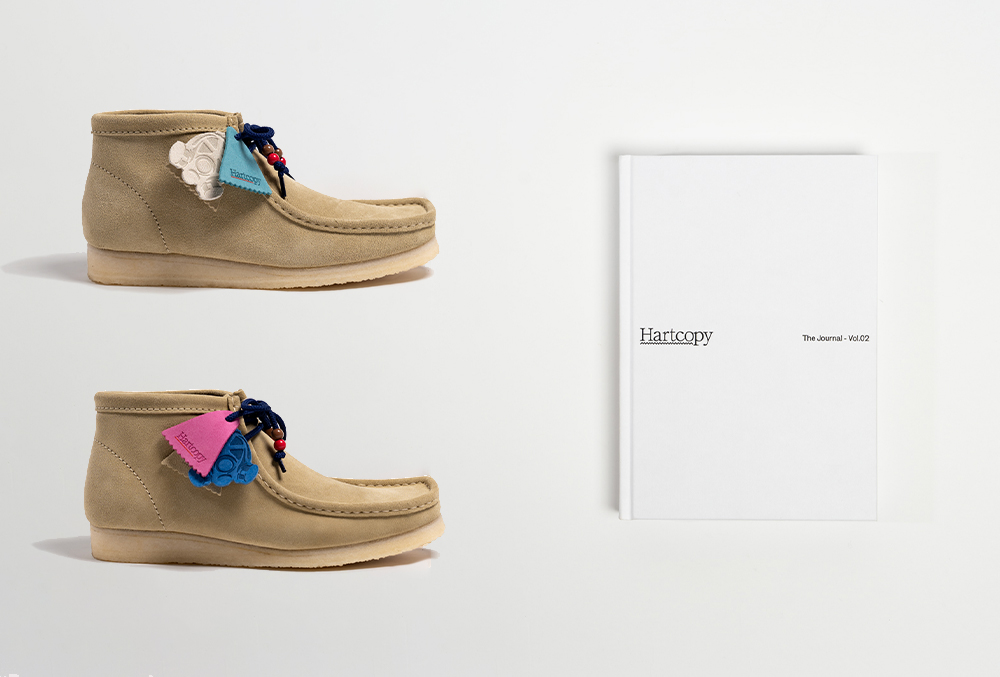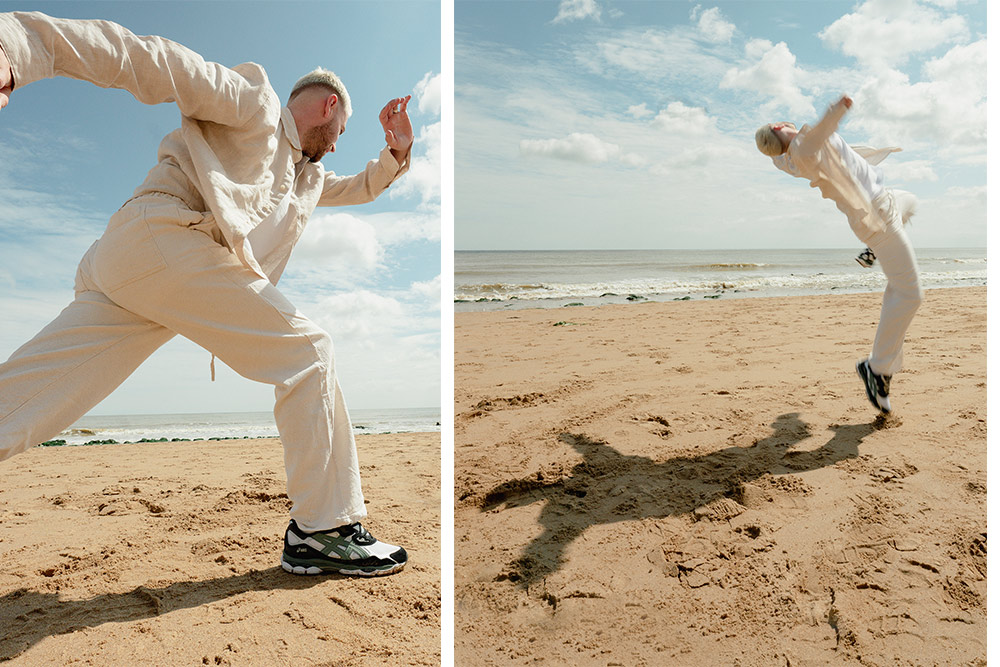Author: Jake Archer
For SS23, we receive another helping of one of adidas’ most coveted collaborations from recent years, Wales Bonner.
For this latest venture, the British designer works with adidas to explore the brands long lasting presence within Jamaican culture. This focus produces a four piece footwear collection consisting of two Sambas and two SL72’s that each bring a striking, yet refreshing colour palette that draws on the nations eye-catching landscape and environment.
The two SL72’s for example feature a reimagined upper, this time opting for a knit that offers a new overall feel and look to this archival silhouette. Both are finished in a distinct colour way that continues the collections homage to Jamaican culture.
Shop remaining styles in-store and online here!



An editorial page founded by Tim Suen & Sam Le Roy during the lockdown of 2020. Hartcopy has been at the heart of sneaker narrative since its inception. Cultivating a newfound culture of knowledge, sharing the history across all brands within the industry, lifestyle stories, and unlocking many of those untold truths surrounding some of the most unknown and coveted releases.
Brimming with sneaker discovery, the ultimate literature hotspot announces the release of its second signature book – Hartcopy Vol.2 which may we add, is now available to shop in-store and online here!

Last year, we supported Hartcopy by hosting an in-store signing, being London’s exclusive stockist for their debut. We are delighted to be celebrating the Launch of Hartcopy Vol.2 through an in-store meet and greet with the brand’s creative mastermind Sam Le Roy in our very own London flagship store, with the aim to bring our community closer and provide you with a night packed with sneaker festivities.
To elevate this special event, we will be partnering with Clarks to remaster our own take on the Wallabee Boot as an exclusive custom giveaway (limited to 20 pairs), with the shoe fobs and laces taking design cues from our early 2013 Taywer FP collection. As well as some additional giveaway merchandise supplied by Jason Markks.

We caught up with Hartcopy’s Sam Le Roy to see how Hartcopy has taken off since we last caught up at the launch of their first ever publication.
Footpatrol: Sam, good to have you back! Hartcopy since we last spoke has taken off, how have you found it?
Sam Le Roy: Lovely to be back! I’ve been great. Busy, but great – it’s a good problem to have in the grand scheme of things. Hartcopy is absolutely soaring and I couldn’t be any happier with it. It’s surprising the rate at which we’re going, but I think that’s just the nature of the game; I’m sure we’ll have a slow period at some point.

FP: What’s been the biggest change?
SLR: I think with increased numbers and access to resources from brands comes a level of confidence that isn’t available through any other means. Previously I thought of Hartcopy (and by extension, myself) as this small time blog with little to no real gravity. I thought of the entity as a means to document, but without any weight or ability to influence and/or steer the industry I can now call home. These days, I can say with nothing but confidence that Hartcopy is a massive entity, one that touches millions of people every month, and with that comes a real sense of belonging and fulfillment, as well as real validation and respect from partners and industry leaders.
FP: It’s great to see you doing so well. With the recent growth over the last year, has the direction and plan for Hartcopy changed or do you plan to keep things the same?
SLR: The plan has always been to showcase and educate, really. The wider plan, at least. Of course there’s a ton of smaller peripheral goals that I’ve got to tick off along the way, but I don’t see Hartcopy diverging from that mission of educating. The only change has really been our ability and success in doing exactly that.
FP: How do you see yourselves growing?
SLR: Aside from the quantitative side of things, which has obviously grown massively, the real growth for me this year has been witnessing how many real people the account can touch. Further down the line I want to cover alot more lifestyle, and hollow out a real “Hartcopy” image, that’s always respectful to history in the same way I do with footwear. We’re still a super small team, but I’d love to eventually have a group of people in the office that all follow the same moral compass and all love the same things.

FP: How do you feel Hartcopy’s impact has been received within the industry?
SLR: I think (or I hope) that Hartcopy can be seen as a “cultural encyclopedia”, in that I hope people look at it as an objective, opinionless medium for distributing information on great products. WIthout a shadow of a doubt, we’ve shown people what’s cool and what’s trendy, but more than that I think that the way we present every pair in full context is very important. It’s not “red shoe, blue shoe”, and we actively encourage people to understand what it is that they’re really buying. Looking further down the line I hope that people have a broadened understanding of consumer habits and why it is we want to buy what we buy, and that people slow down a bit and just enjoy what they’ve got. Maybe we’re not exactly there yet, but I hope that one day I’ll be able to have that impact.

FP: With the amount of reach Hartcopy has and the insight it creates into the product, I’m surprised you haven’t got a collab in the works! With all the shoes you have documented, was there one that you looked at and went, ‘Damn I wanna do a collab on that one day’?
SLR: We actually do – I’ll leave it to your imagination, but there’s definitely a handful of pairs being worked on. We’ve already worked with Clarks Originals (on two occasions, actually) and are quite far down the line with multiple other brands. Keep an eye out later this year for the start of all that!
FP: Vol.3, are we safe to say it’s already in the works?
SLR: Absolutely – I’ve already been concepting everything and things are looking great. We just need to get a hold of all of the shoes, but that’s the fun part.
FP: We know you recently launched your book, Aesthetic Survival. Is there a plan to continue growing out the realms of which Hartcopy covers?
SLR: Aesthetic Survival was really an amazing experience for me personally and it was a great exercise for Hartcopy. Working with Aurora (who co-authored the book with me and concepted the project herself) was an immense pleasure, and it opened my eyes to the opportunities that lie out there for Hartcopy as a publisher on a wider level. It’s very important to me that we continue making these books with creatives around the world, and it’s definitely something I want to do more and more down the line. Who knows, we might already have one in the works with someone else!



For the launch of the Saucony Progrid Omni 9 OG we talked with Artist, filmmaker and designer Aaron Bevan-Bailey talks to us about the founding of ‘Play Attention’. We dive into what drives his creative urges, learning about all things from processes to craft, and as luck would have it a similarity on colour palettes to the OG Omni 9.
Footpatrol: Hey Aaron, hope you’re well, thank you for taking the time to chat to us, could we start by getting a bit about yourself and what it is that you do?
Aaron Bailey: I’m an Artist, film maker and designer and founder of Play Attention. If i’m not painting, illustrating or sculpting Im filming something. Creating and making things with my hands is my happy place. I have a hard time putting a label on what I do because it’s constantly evolving but Play Attention seems to be versatile enough to satisfy a lot of my creative urges. I’d describe myself as a Creator.

FP: We know you’re an artist that has a very distinct style, however, we’re here today to talk about your other project ‘Play Attention Now’ Can you give us some background on how and why this was started?
AB: Play Attention started as an antidote to the more serious themes in my other artwork. It was a sort of playground where I would just freestyle and let my imagination run wild. For me it was a way of injecting humor back into my work.
I worked as a storyboard artist and Art Director in advertising before starting Play Attention. I felt like it was time to use the skills I learned in the advertising world to do something other than just sell random products. I wanted to do something that mattered to me and inspired other people. I was doing a lot of spiritual self reflection and the name Play Attention came from remembering to find the Joy in that new sense of awareness, not taking myself too seriously. The older you get the more important it is to find a sense of open minded playfulness so you don’t become too rigid.
FP: How do you approach each illustration? The subjects and characters that feature in the works are quite varied.
AB: I start with a very loose idea letting each mark react to the last, sort of like a meditation or a puzzle and let the composition evolve naturally. I like to just draw with ink and no under drawing incorporating the mistakes I make into the final piece. I think that style of drawing really struck a chord with people online. Kind of like advanced doodling. When you watch it in timelapse it looks sort of effortless but trust me its taken a long road of trail, error and practice to make it look that easy.
My inspirations come from everywhere and anywhere memes, reality TV, renaissance paintings, cartoons. Faces will catch my eye and I can already see them as a drawing. I love drawing things that are quite grotesque. I was obsessed with the cartoon Ren and Stimpy growing up. I loved when they’d cut to a close up of something and it would be this beautifully rendered stomach churning painting.

When I was a kid I was very into comics like 2000 AD, Tank Girl, Frank Miller’s Dark Knight and anything by Moebius. I would live with my head in the pages of Judge Dread and Slaine. I used to copy the illustrations of people like Dermot Power and Brian Bolland obsessively; that’s kind of how I taught myself to draw. I love comic book illustration, you have to simplify and distill the marks. One line has to do the job of five in a more realistic drawing. Its more complicated than it looks, the greats can convey weight, physics, sound, movement, texture to the point where you really feel like you could step inside that world, all with simple lines.
I think my ten year old self would think I have the dream job. I try to remember that when I’m drawing. I keep a photo of myself in my desk from around that age and think about what he would think was really badass. I feel like if you draw things that appeal to your inner child it tends to connect with other people on that level. I always loved the simplicity of people like Kieth Harring. His art can connect with someone who’s 5 or someone who’s 85 and make them both smile. Picasso said “It took me a lifetime to learn how to draw like a child” that always stuck with me. Play Attention is just what naturally comes out if you put a pen and a piece of paper in my hand.
FP: Roughly how long does it take to finish a piece? Is it something you’ll try to get done in a small window of time? Or something you’re happy to visit over a period of weeks or months?
AB: It depends on how inspired i’m feeling.I try to draw quite quickly, the drawings have more energy that way. Some I’ll do in an evening in a single sitting and others I will revisit over a couple of days. The big pieces can take me a week. It also depends if Ive drawn the object/character before or not. When I draw purely from imagination and memory it comes out faster. I try to remember things Ive seen and draw them from memory. One of my idols, the late Kim Jung Gi, was a master at this. He could draw incredibly complex structures like oil rigs and military aircraft from memory. He inspired me to have the confidence to stop under drawing and just ink. If you don’t know his work I encourage you to check him out, you will be both inspired and humbled. You retain way more than you’d think I like to exercise that part of my brain.
FP: what are your go to pens for producing these illustrations? Is there something you’re yet to try and incorporate or would like to try differently going forward?
AB: I use alot of Chinese calligraphy brushes in my work. I love the lines they give you. They encourage me to make more bold marks. I’m also a big fan of Pentel Brush Pens. They are frustrating at first but once you figure out the right amount of pressure to use you can get so much variety out of them.
I definitely want to start working on a much bigger scale if anyone wants a Play Attention Mural holler at me.
FP: Do you take commissions through PAN? I’d imagine people come to you with some pretty crazy concepts?
AB: I do take commissions, I like to keep the brief pretty loose so I have space to play. I recently did a piece where someone wanted a bunch of legendary jazz pianists. That was fun. I listen to alot of jazz when I work. I feel like Jazz is all about improvisation and flexing in your art form without being too tired to structure. I like to think my drawings are a bit like that.
I’m designing merch, posters and stages for this years Secret Garden Party Music Festival at the moment. I’ve also been doing some artwork for Seth Troxler’s new label Slacker 85 that I’m very excited about coming out.
FP: If YOU were a sneaker, what would you be?
AB: If I was a sneaker Id be Jeremy Scott Js Wings because they’re cartoonish and surreal but based on the Campus 80s an absolute old school hip hop classic. I just love that he did that, its such a bat shit crazy design. I want to be that bold when I start doing sneaker collabs.
FP: Tell us about your venture into apparel, we recently saw you screen printing your designs, if there was a brand you could work with (you never know, they could be reading!) who would it be?
AB: My ethos with apparel is definitely about sustainability. I love reworking, upcycling and extending the life of pre-loved classics. I think the future of fashion depends on it. Coming up without a lot of money it was all about finding that vintage gold and customizing it to make it my own. Streetwear has always been about styling out what you have and juxtaposing things you wouldn’t think would necessarily work together. I like things that are slightly distressed with a bit of character, one offs you know no one else has.
I don’t want the creativity to stop at the point of sale. I want to inspire people and encourage them to further customize the things I make. That’s something I’m definitely incorporating moving forward. I’m looking forward to doing some pop ups later in the year where we will have a screen printing carousel where people can print my design on their own clothes or customize pieces they buy from the store.
I really love vintage Carhartt workwear; it feels like a blank canvas to me. I love getting my hands dirty in the studio building things so I like something rugged enough to work in that looks cool. For me it’s the perfect balance between style and functionality. If anyone from Carhartt is out there, hit me up.

FP: Before we go, we just want to finish on giving you an opportunity to shoutout or give any words of wisdom on what the current creative industry is doing well or even lacking?
AB: Learn to accept your mistakes. Let your limitations become your style.
Shop the Saucony Progrid Omni 9 OG online at Footpatrol.





Ever since ancient times, gold has never been far away from the collective fascination of many cultures and civilisations, often thought of as the ultimate symbol of wealth and importance. From the gold-spun fabrics used by royalty and nobility from the 14th to 17th century, to even older examples of gold-embroidered cloth favoured by the ancient Greeks and Romans, not to mention its sustained use in jewellery over the ages, the precious metal has an unmatched legacy within fashion. For the majority of the last 100 years, this legacy had mainly been associated with opulence, intertwined with esteemed luxury fashion houses like Gucci and Louis Vuitton, but towards the latter part of the century, its cultural association began to shift.
With the emergence of hip hop in the 1980s, gold became the go-to ornamental choice for many of the pioneering MCs. LL Cool J, Run DMC and Biz Markie were leading forces in popularising the gold rope chain and four finger bar ring. Slick Rick would don a gold crown and sceptre combo to accompany his multiple gold chains, and Big Daddy Kane’s ‘Long Live The Kane’ album cover displayed an even greater level of regal imagery, with the rapper draped in gold chains and sat on a gold throne, in a look reminiscent of ancient African rulers.
Though this lavish era of hip hop fashion gave way to a more casual, workwear-influenced mode of dress in the early nineties, with an emphasis on tougher baggy silhouettes, gold jewellery remained a staple, albeit to a moderate degree. Artists like Dr. Dre and Ice T were often seen with a simple gold curb chain or bracelet, as well as the occasional iced out Rolex, which completed their cleaner, all-black ensembles.
As hip hop’s dominance on global popular culture intensified in the mid 1990s, gold was beginning to symbolise something new. By the end of the decade, hip hop style had pivoted back to more flashy, extravagant form, as the gangsta rap era reached new heights. Gold Cartier frames, medallions and watches accented oversized get ups, with an emphasis on power and money. The West Coast label Cash Money perhaps typified this new image the most as hip hop surged towards the new millennium, setting the tone by name alone, producing blinged-out album sleeves for many of their roster’s early output, notably Lil Wayne’s 1999 debut ‘Tha Block Is Hot’ and B.G.’s ‘Chopper City In The Ghetto’, released the same year.
Another hip hop favourite gaining traction in the 1990s was the grill. Originally seen on the likes of Slick Rick and Flava Flav in the previous decade, rappers like ODB and the RZA of Wu Tang Clan shone a new light on the accessory with inventive designs such as fang shaped canines. Across the pond, Drum n Bass Godfather Goldie learned the craft of creating gold caps to build an impressive 24 tooth grill to match his name. Goldie’s striking visual identity of baseball caps, shell suits and excessive gold jewellery could be seen as a precursor to the UK ‘Chav’ attire which went on to epitomise British working class street culture in the early 2000s.

The gilded effect of street culture around this era would inevitably be felt in sportswear. Following the release of the groundbreaking Air Max 97 in its iconic ‘Silver Bullet’ colour scheme, Nike sought to further capitalise on the burgeoning interest of metallic palettes across its performance models. In its wake there had been a spate of shimmering sneaker renderings, notably on the blue-hued Air Foamposite in 1997, with its follow up silhouettes, the Air Foamposite Pro and Total Air Foamposite Max, adopting similarly silvery tones for the uppers, and the metallic theme would even seep into
the lifestyle range by way of the ‘jewel’ swoosh, which played a key role in reigniting interest in the Air Force 1 model around the same period.
1998’s World Cup had seen the unveiling of the Mercurial R9 football boot, a pro model for the superstar Brazilian striker and Nike athlete Ronaldo, which channelled wavy silver accents into its sleek new lightweight design. A stark contrast to the all-black leather boots that had been the norm for brands and players up until that point, and a glimmering sign of things to come for the world’s most popular sporting industry.

With silver then firmly established as a new core colour for Nike, the natural next step was to turn to gold. Two years on from the Silver Bullet, the Air Max 97 would be the first flagship Nike sneaker to get the gilded treatment when the aptly-named ‘Gold Bullet’ or ‘Golden Nugget’ dropped in 1999. By simply replacing the silver uppers with gold, the shoe kept the visual integrity which had made the AM97 such a success, as both colours complimented the white midsole, 3M accents and University Red swoosh combination perfectly. The Gold Bullet also called back to the famous asymmetric gold running shoes worn by American sprinter Michael Johnson at the 1996 Summer Olympics in Atlanta where he would fittingly win two gold medals.


The connection of hip hop and streetwear has been cemented thanks to the alignment of culturally significant trends banded between the two factions over the last 40 years, so it’s no surprise that gold is so deeply-rooted in each. Taking cues from the early days of the imperious music subculture, trailblazing streetwear brands such as Stussy and FUCT have often used gold for their jewellery lines, memorable examples being the former’s 40th anniversary gold signet ring and the latter’s Skull Bunny rings and pendants from the FUCT SSDD range.
Gold’s employment within streetwear has also been a way to mimic and subvert designer labels and high end aesthetics. The masters of this are perhaps Supreme, who’s use of the colour stretches back to at least the late nineties, with the release of the ‘Bling’ box logo. The design featured a gold bar with a jewel-encrusted spell out, and was used on a selection of t-shirts and stickers in 1999. By the early 2000s, the New York brand had embraced gold as a staple colour, and whether utilised overtly- such as in 2013’s gold playing card deck or 2017’s Metallic Gold Nike Uptempo, or as a subtle embellishment- as seen on 2003’s Nike Dunk High’s use of gold stars to offset classic Dunk college colourways, the effect is still true to the label’s tasteful but tough aesthetic.
Western street labels weren’t the only ones getting in on the begilded act. As A Bathing Ape started to broaden its appeal by evolving from hip Japanese underground brand into mainstream streetwear powerhouse, many of its staple items would get the golden treatment. Gold-tinged t-shirt graphics, gold foil BAPESTA and ROADSTA sneakers, and a slew of gold accessories including BAPEX watches and Bearbrick figurines would serve to define the brand’s new identity. Even the APE head graphic woven label, situated at the sleeve of BAPE’s iconic tees, would be rendered in gold henceforth.

NIGO’s link up with Pharrell in the early noughties, by way of Jacob the Jeweller no less, explored this angle further, with the pair revelling in the ostentatious nature of hip hop of the time, eventually starting the bling-focused, luxury streetwear label Billionaire Boys Club together in 2003. The N.E.R.D. frontman’s influence on the designer’s personal style is well documented, but duo’s mutual passion for gold-plated nostalgic or culturally significant items becomes even more apparent when you conflate the aforementioned golden BAPE products with Pharrell’s inordinate collection of gold gear the years, which has included a golden Blackberry and a 14k gold-plated PSP console.

The subcultural fixation on gold has yet to wane. It may have seemingly reached the apex, but the bond with hip hop is stronger than ever. Be it Kanye’s 2013 $750k gold toilets, or Drake’s 2 million dollar solid gold Jordan 8s from 2016, rappers have continually found outrageous new ways to flaunt the precious metal. But aside from these absurd novelty pieces, gold has remained a timeless hip hop fashion statement, and if the current crop’s penchant for layered gold curb chains and grills blended with the key element of today’s nineties revivalism (Cartiers, elaborate pendants) is anything to go by, gold’s popularity appears gleaming. Sneaker culture too remains in step with the metallic zeitgeist, evident in the carefully considered reissues of the Silver and Gold Bullets, built true to the original spec by Nike for the first time in over 20 years, and ready to define another era.
Words by Samuatro

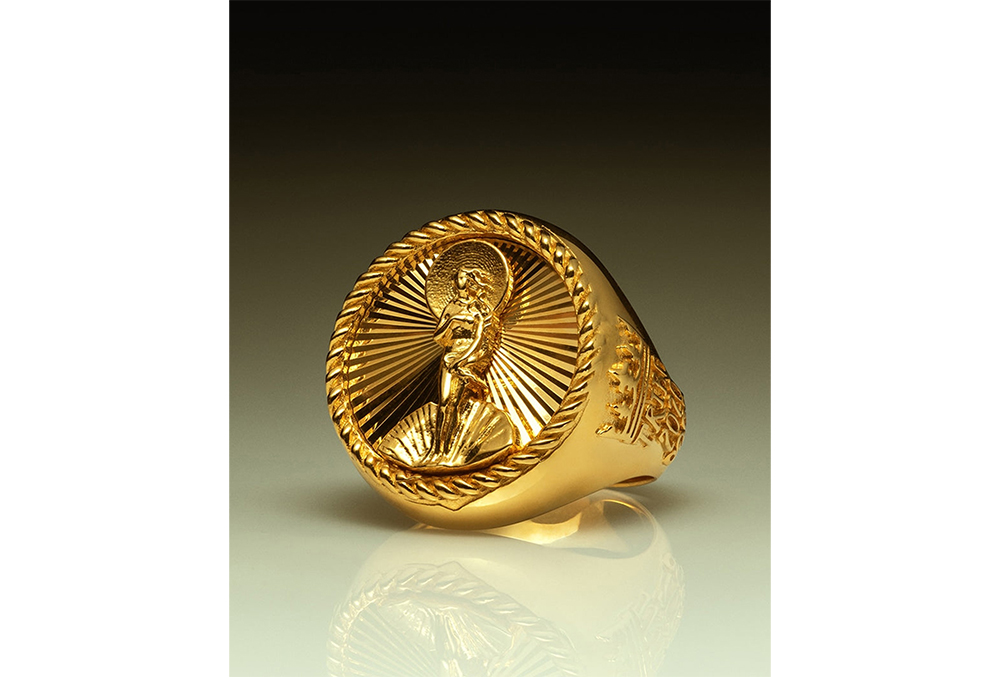
For our next Frequent Players guest mix, we pay a visit to frequent Balamii Radio and Apron Records host, Rixon D. One we’ve had our eye on for a while, Rixon D is well known for spinning experimental beats to RnB with a perfect blend.
Footpatrol: Hi Sam, we hope you’re good? Firstly, thanks for letting us come and talk to you today. Could you tell us a bit about yourself and what it is you do?
Rixon D: Hey FP crew, all good thanks! I am a DJ and have been doing so for about 6ish years and have a monthly show on Balamii Radio. Alongside that I work with the Apron Records family.
FP: We also know you did a stint on Berwick St, not too far from us, can you tell us more about this and your connection to Footpatrol?
RD: I did, a while back now! I worked a few doors down from Footpatrol so I was a regular at the store.
FP: Onto the music, how, when and where did this all start?
RD: As mentioned, I began getting into DJing about 6 or so years ago and started shadowing various DJ mates of mine and eventually jumping on their shows which ended up with my own residency on Balamii. Shout out to The Spot, Shy One, ChloeDees and Dubious Doobies to name a few!
FP: A few genres seem to frequent your mixes, from RnB and House to Techno and Broken Beat, would you say these are personal favorites?
RD: Yeah for sure! over lockdown I did pick up a secondary show also on Balamii where I explored more Jazz/Ambient/Soulful music but after things reopened I chose to continue with regular programing on my OG show which if you know is more Techno, House and dance floor based which is definitely my favorite to spin.
FP: You’ve had many guests featured on your show, who would be your dream guests to have on in the future?
RD: Damn that’s a good question… Hmm, I’d have to say probably Larry Heard and Omar S are two I would love to have on.. Who knows!
FP: How would you describe the connection between sneaker culture and the music scene?
RD: The two have always been interlinked in my mind. If you look at dancefloors around London and beyond you will always see certain models of sneakers at a certain type of party and it is not a coincidence.
FP: If YOU were a sneaker, what would you be?
RD: Ouff, it’s too tough! I would have to say an Air Jordan 3, Air Jordan 4 or Nike TN.
FP: We know you host mixes on Balamii and with Apron Records, are there any live sets we can see you at soon?
RD: We (Apron Records) will be hosting monthly parties at the Haggerston on the last Saturday of every month starting in June! Keep your eyes peeled on the socials for other parties and info too!
FP: Thank you for taking the time to chat to us! Are there any words of wisdom or shoutouts you would like to make? The floor is yours!
RD: Thanks for having me! For any DJs starting out in the game I would recommend finding your own lane and sticking to it because a point of difference is key. Also, shout out to everyone who has been listening to the shows and coming to the parties over the years, there is more to come!






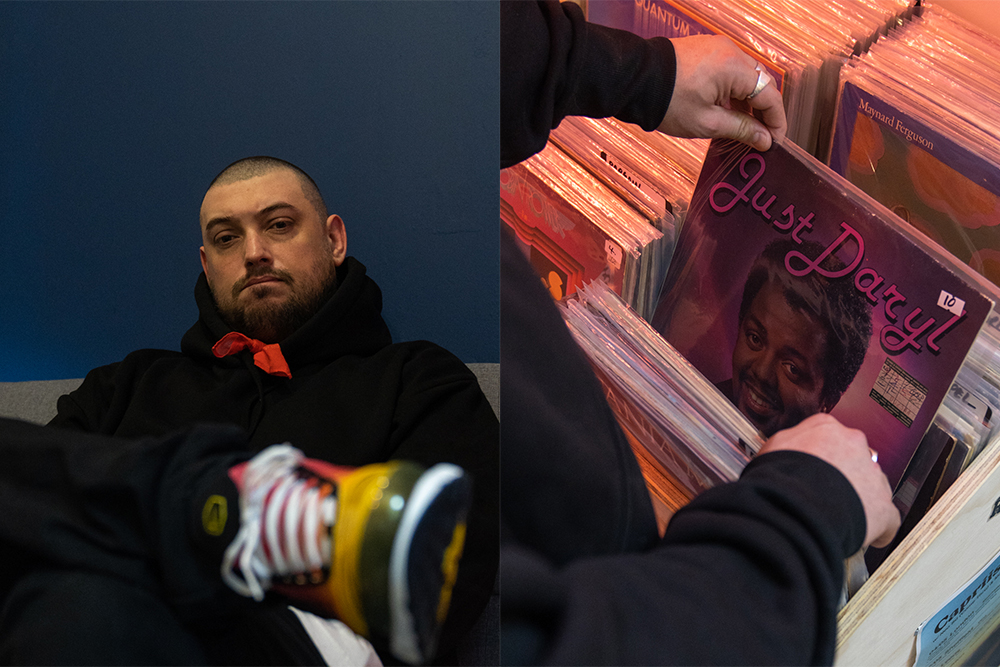

FP Meets is our opportunity at Footpatrol to learn and share this with our community. We delve into the minds of some of people who have been part of some of our favourite brands. From designers, photographers to brand founders and marketing teams, we love to learn more about processes and product.
This week, our Footpatrol Paris team travelled to Marseille to visit creative designer and performance footwear consultant, Monsieur Germain.
Over 15 years of experience behind him, Germain has been part of some of our favourite brands including the likes of Mizuno and other well known brands like Veja. Within these roles, he’s been a part of the whole process including design, production, artistic direction and the product development.

Footpatrol: Hi Germain, we hope you are well? Firstly, thank you for letting us come and talk to you today. We’re interested to learn a lot about your career and current practices. Can you start by telling us a little bit about yourself and what it is that you do?
MG: Hi! I’m doing very well, thank you. My name is Germain Thomine and I am a Footwear designer who specialises in performance. I’ve now been in the shoe/sneaker industry for about 15 years.
I first started in Munich in an agency called Creation & Focus where I worked for Puma, Diadora, and a few more secret projects at the time at adidas for example.
Little by little, I fell in love with sneakers in general. My mom is a former fashion designer and I was quite interested in fashion as a kid. The relationship between the industrial product and fashion exists within the shoe. There’s this combo between the upper which is generally in textile, so very fashionable, and the sole which is more rigid and efficient so more related to product design. After 5 years at C&F, I was hired by Mizuno in 2015 to become Design Manager of their European offices in Munich. I spent almost 4 years there internally. I worked on different categories: running, handball, volleyball, football, etc.
In 2018, we had the idea with Lucas Marchet and Wesley Tyreman to launch a Lifestyle collection at Mizuno. We realised that with 110 years of history and the archives they had accumulated, it was a shame not to operate a Lifestyle range. So we developed this whole Mizuno Sportstyle range by creating a family story with the Kazoku. Kazoku means family in Japanese, and we created a whole ecosystem around this Lifestyle category with special partners like Footpatrol, for example.
After that, I went freelance because Mizuno was moving, and I couldn’t move out of Munich. I nevertheless offered to continue the adventure together and we decided to continue as freelance.
FP: Can you tell us more about your time spent in Munich at Creation & Focus Agency, and the sorts of projects you handled here?
MG: I oversaw Motorsport products and Kids for Puma. For Diadora I did Running and Cycling, so I was all about performance. I stayed within this agency for 5 years, but I was hired a little “by chance”. I have an industrial design background and they wanted to take me for a project with Puma which was to integrate a speaker on a shoe. I had just come back from a year of training in China where I was doing washing machines, coffee machines, etc. So, I had my background as an industrial designer and they contacted me specifically for this project. Turns out they didn’t have the budget to go through with it, but it was very interesting!
FP: Then we understand you moved forward into design footwear manager for Mizuno brand. Can you tell us more about similarities or the differences between Japanese design processes unlike previous German and Italian brands? Is it true you were also the first non-Japanese designer at Mizuno?
MG: About being the first non-Japanese at Mizuno as a designer, I think that’s true but I’m not sure about that haha. I was told I was the first European to work for the brand. But I know that Tuan Le, who is a legendary designer at Mizuno, was not Japanese but Vietnamese. In the teams, there were very few westerners, even after I joined the company. Adapting to work with the Japanese requires to be a lot more rigorous than in France for example. I already had this rigor thanks to the Creation & Focus agency, which was a German agency managed by Rudolf Hieblinger, an Austrian who is also pretty square in his approach, his development follow-up, etc. Let’s say that I already had a well-established mold.
The big difference was the cultural difference from day to day. It has been very rewarding to be immersed in this fascinating Japanese culture.
FP: Last night you told us that working in contact with this Japanese culture has established practices in your daily life and in your work that you still apply today, even after leaving the company. Can you give us some examples of routines or practices that you have put in place while working there?
MG: One little thing is my morning coffee. I discovered this in Japan with the V60 culture. I like the fact that it’s really like a morning meditation. I need to almost meditate while making my coffee in the morning to start my day properly. Without that, it’s true that the day can quickly get off to a bad start. I like to take my time, have fun and do things well. It has an impact on the work I do, with Mizuno and now with my other clients, is that I also like to take my time and do it well. Japan, and Mizuno in particular, is really about research and development. It’s really a country of engineers: it’s more engineering than design. It comes back to what I said at the beginning: I am more an industrial designer than a designer of sneakers at the start. In any case, I identify more like that. I have a relationship to the product that is quite advanced in terms of development.
FP: From working across many categories like Football, running to Sportstyle what was the area you found most challenging here?
MG: Yes, there are many! We’ll say that Sportstyle was something quite new for me because I started with a very technical background, very “performance”. When we started this part, since I’m not an unconditional fan of sneakers either, I had to learn “on the ground”. It was challenging at the beginning, but little by little I knew how to surround myself with people who were ultra-qualified to guide me where it was necessary and to make me know all this culture in detail. The stylistic approach to the sneaker was the most challenging.
As far as the technical approach goes, in terms of the products I’m working on, none are more challenging than others. I like working with brands that are more “Lifestyle” brands but give them their share of performance. Whether it is comfort, a new technology or product typologies such as running, trail running, hiking, etc. I like to bring this touch of performance and sport to these products.

FP: Earlier you showed us some products that you worked on for Aigle. Looking at the pair, we find elements of the Kobe 5, but also of the Air Max 95 or the TN 2. We see that you really took a hard look at the Lifestyle and “culture” side of sneakers to find inspirations. Is that something you easily got into?
MG: Yes! It also comes from the stroke of a pencil. It’s a flow, I go as I feel. In this case, the pair is inspired by the topography of Buttes-Chaumont Park. It’s full of lines, topological curves, and the idea was to have a product focusing on those points. Then I like to look at the references there can be. It’s true that the 95 is one of the products that really play on curves, the different layers levels that inspire me a lot. But it’s quite a job: not to copy but to take inspiration everywhere. There is also the search for material, technicality, performance, comfort, thermoregulation… On many things in fact. On all products there is always a lot of research and that is what is interesting.
Especially for this project, I think it’s not exactly where we’re expecting Aigle. This is one of the challenges that are interesting to take up: pushing a brand to its limits and offering either new categories or a new horizon for existing products but make them more “special”.
FP: Did the opportunity to then go freelance feel like a freedom you might not have had when designing in-house? What did the transition feel like entering a world of working for yourself?
MG: Definitely! I feel a lot more freedom. What is also fascinating in the freelance approach is to work with different people depending on the brands you deal with. The approach is completely different as well, whether it’s in strategy, in product, in communication, in development. Some brands have in-house developers, others don’t. So, I have to do according to the brand I work with. I also have to bring in my network, my suppliers, all of them. The network is growing as well. It is this flexibility that is pleasant: I choose my clients almost everything and it is super comfortable. It allows you to go where you want to go. Internally, sometimes you are confronted with decisions of managers etc… Externally, you have less of that “reporting” relationship. I do a service and I bring my story from A to Z. I manage my product development and I go from the first stroke of a pen or the “first sentence the story”, to the finished product on the store shelf.

FP: Touching on Eco-design, a process i know you’re very passionate about, over your time as a designer have you noticed this process being introduced a lot more at brands? And in what ways are you including it into your design processes?
MG: It happened relatively quickly in my career because already when I was working at Creation & Focus, I was quite focused on the subject and on minimizing glues and oil-based synthetic materials. I’m trying to work more on a product that’s recyclability oriented. It came quite early but when I was in-house it was complicated to move the lines at Mizuno because the decisions aren’t necessarily the ones you want to take because of the hierarchical and budgetary structure.
On the other hand, freelance people usually call me specifically on these kinds of missions. I work on a “from scratch” approach, from zero to the end, thinking about the entire product and the supply chain that goes through the materials or the factories with which we are dealing. Eco-design is not just about having organic cotton and a recyclable shoe. It’s to have an ethics from A to Z. I know very well that the products I develop can be better, even more thoughtful in terms of an ecological approach, but what matters most to me is that there be an environmental and societal ethic across the board. Work with factories that are socially correct, that it is well done, paid at fair value. I consider that my work is a work of designer but for a shoe, there are 50 pairs of hands that will touch it to develop it. If there is someone in those 50 pairs of hands who is being abused, ethics no longer exist. On the green side, I’m constantly looking for new materials and new technologies that make things happen. It’s very complicated, but I really want to work towards that.
FP: Do you have any examples of products you like to work with?
MG: There are a lot of suppliers and actors who do good things. For example, Arkema with their Pebax which is made from castor oil. It is a foam for the sole that is biosourced. There is real ecological research, and it is one of the most interesting materials for the sole, knowing that it is the part of the shoe that is the most challenging for an ecological approach.
FP: here is a random curveball, if YOU were a sneaker what would you be? And how would you be made ?
MG: I don’t know if it’s really for its design or its usefulness, but I have a weakness for the Cortez. It’s THE pair of shoes I admire because it’s very simple in the end. The Cortez OG is the pair I love.
FP: A little bit of culture or nostalgia about Forrest Gump?
MG: I don’t know, there’s an athletic approach but at the same time it’s a bit bulky… I actually find it funny.
FP: It’s an interesting choice knowing everything you do in your designs. We’re back to something pretty simple.
MG: It’s very simple! And what I like is the fact that it’s simple. It’s this approach of humility actually. It is efficient, the Swoosh is huge: it was the biggest Swoosh at the time. In the end the construction is basic and it does the job.
FP: Thank you for taking the time to chat to us Germain, here we would like to extend an opportunity for you to tell us about any future work or projects we can look forward to seeing from you soon? And if you had any words of wisdom for other aspiring footwear designers out there?
MG: First, thanks to the whole FP Team, to both of you for this great time! And for those who want to get into design, go ahead! Go ahead. We must surround ourselves and be part of a community, which is increasingly important today. And try to have an ethics, it’s important too. To create it takes several people, as I said: a pair of shoes is a minimum of 50 pairs of hands that develop it, so meet people, share and build your team. That’s the coolest part.


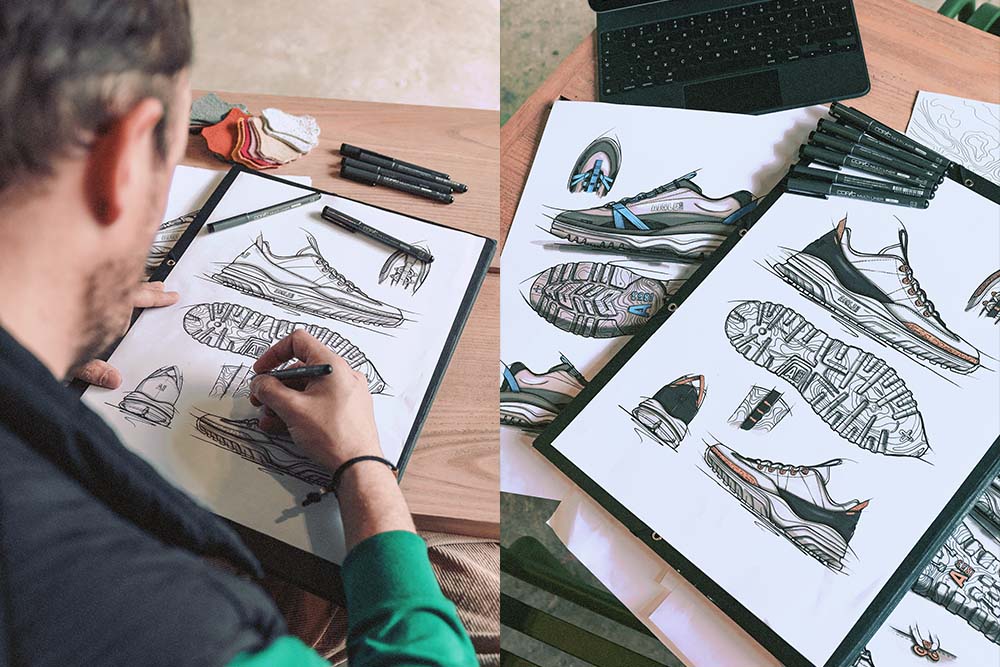




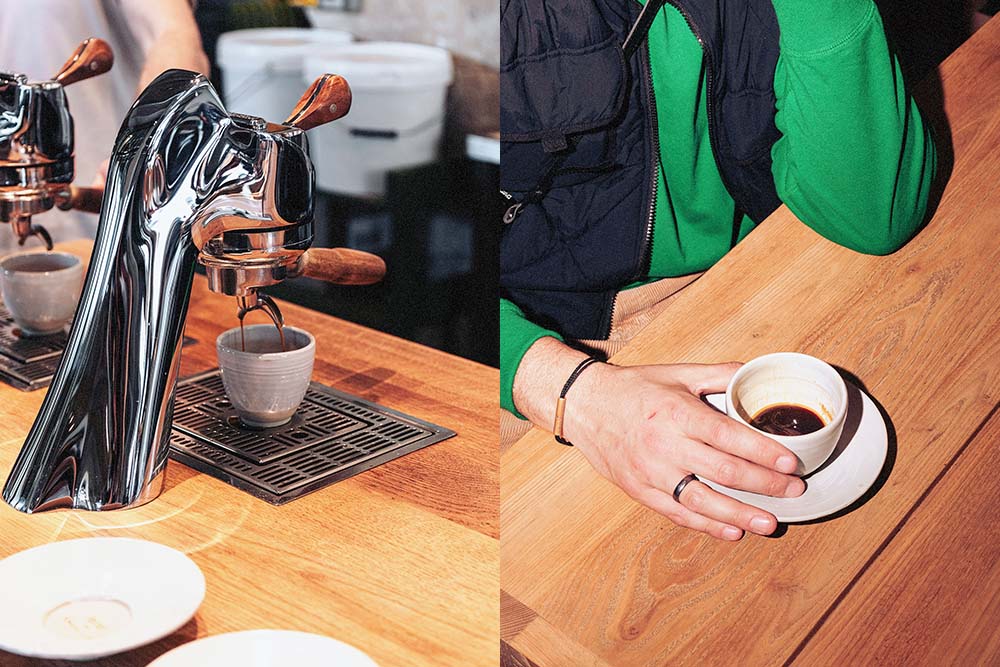

This season, we recommence our long-standing partnership with adidas, unveiling our latest iteration of the adidas Originals campus. For this collaborative effort, we wanted to champion a real feel of 80s terrace nostalgia, searching through adidas’ long-listed lineage of fits whilst combining elements plucked from our FP archives to deliver an all-new lifestyle-apt feel to this icon.
Forming an important part of our design discography throughout our 21-year tenure, the Footpatrol and adidas collaborative journey hails back to the noughties with our first-ever pairing of the Consortium Superstar Vintage (2005), shortly followed by our first adaption of the adidas campus (2007), that hit our shelves in three newly re-tooled colourways (Burgundy, Mustard, and Iron).
From here we continued to pluck out some legends from the German brand’s archives including the arrival of our ‘Aqua’ ZX800 from the A-ZX series (2008), taking part in the Consortium programme with Hong Kong-based retailer JUICE (2017), not to mention our lauded Consortium Runner 4D (2018) and EQT Running Support ‘93 (2021).
Upon arrival, our latest rendition sources inspiration from all previous Footpatrol Campus collaborations. Landing in a muted pigskin suede build, adjoined with long nap hairy suede emblazoned across the toe box, which builds out the streamlined shape of the shoe. Tonal pony hair material grace the 3-Stripes branding on the laterals, whilst the medial removes the 3-Stripes exposing the underlayer liner material.
Dual tongues comprise of two different layers; the outer side takes on a pony hair build while the inner tongues (left – ‘Navy’ | right – ‘Burgundy’) draw inspiration from the colourways of our 2007 & 2011 Campus collaborations complete with Footpatrol branding in debossed form. We also pay homage to those earlier colourways through our co-branded ‘Mustard’ and ‘Iron’ painted insoles.
Doubled stacked heel tabs are gilded in a recycled snakeskin print with adidas embossed logos, while underneath, tonal branded 2002 & 2022 lettering as a nod to our 20th anniversary. As if all these details weren’t enough! The Footpatrol branding has been shifted from the traditional positioning and placed around the lateral ankle collar. This pays homage to the detailing found on the 2002 adidas Predator Mania (a customisation detail created for elite players only).
Shop the Footpatrol x adidas Originals Campus in-store and online here.
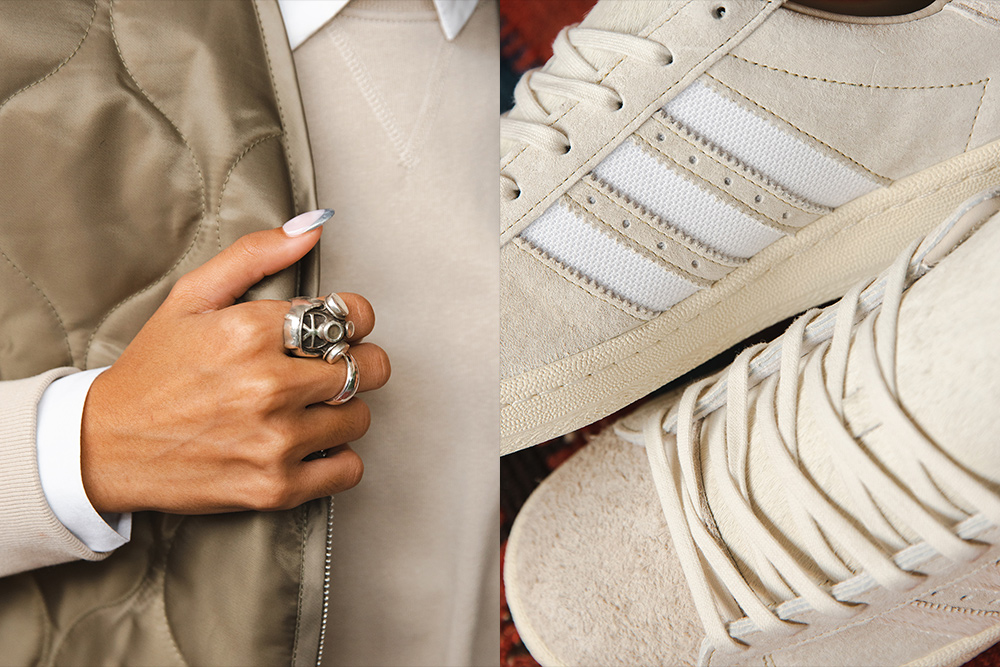






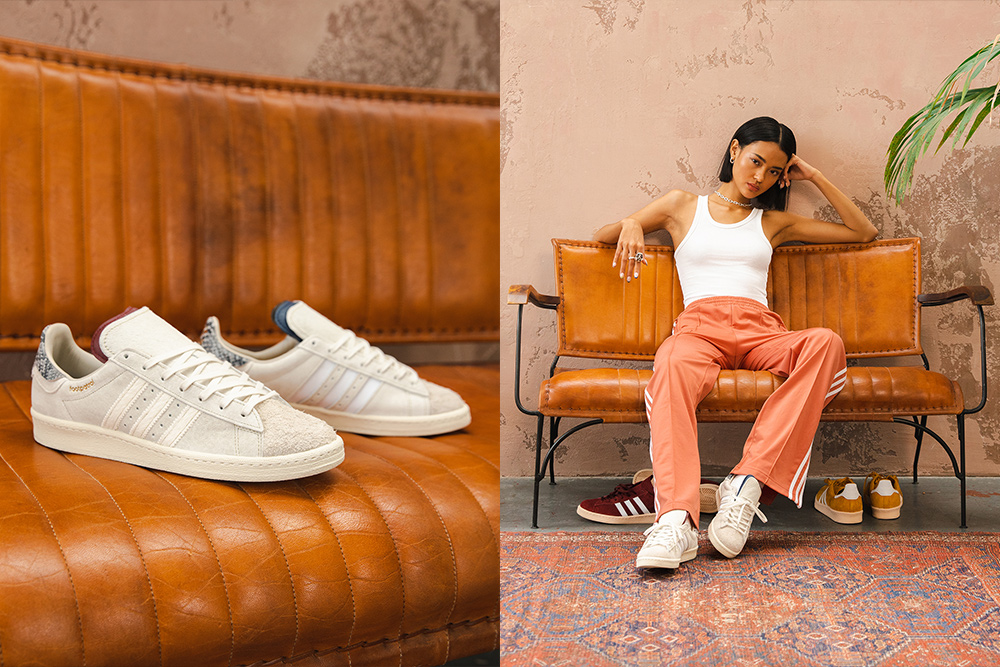


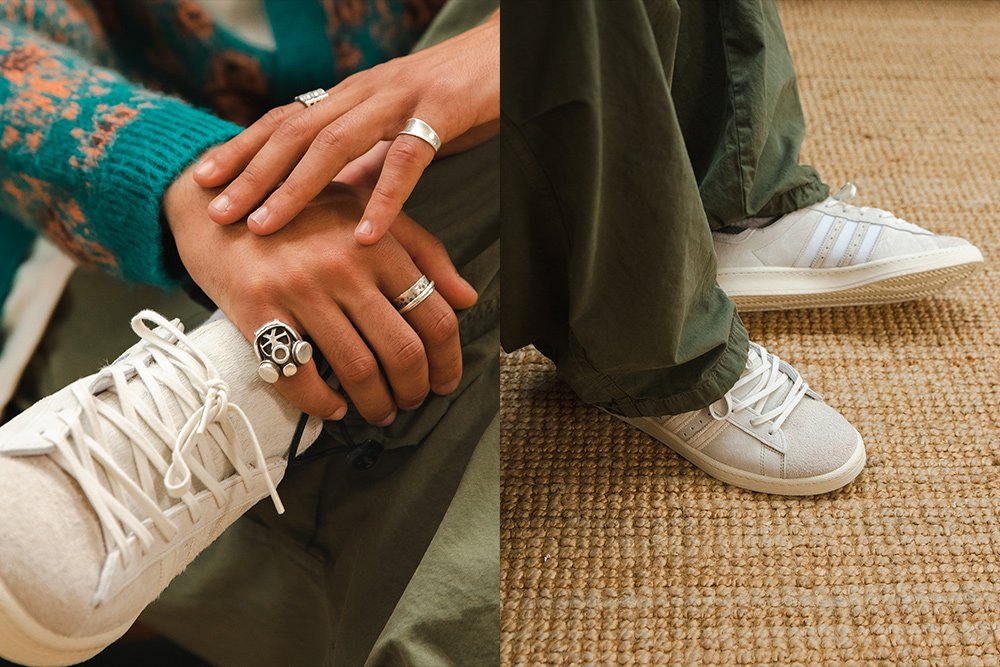


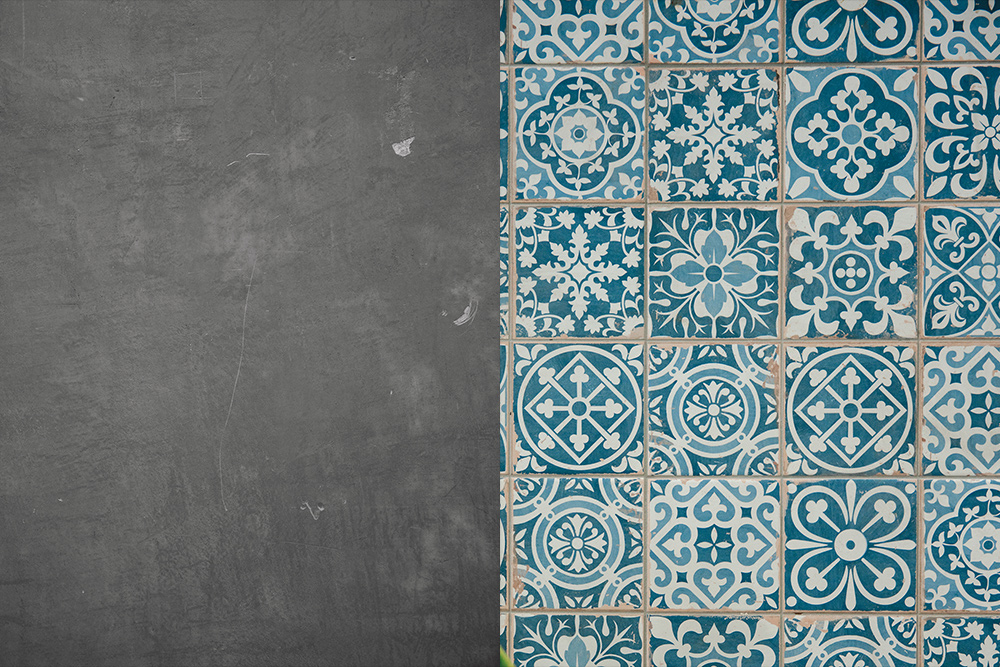
‘Sound Mind, Sound Body’… A phrase that has become engrained within the body of ASICS since its beginnings, it’s a way of declaring their love for movement.
Now known as the GEL-NYC, this latest offering from ASICS was partly designed in partnership with New York’s AWAKE NY. Finding its influences within the world of heritage and modern performance styles, the GEL-NYC is a homage to the past whilst carefully navigating the future. To celebrate two new colour ways landing at Footpatrol, we headed down to the English coast line to explore our ‘Sound Mind, Sound Body’
Take a closer look at this latest offering below and make sure to check out this latest style online here!







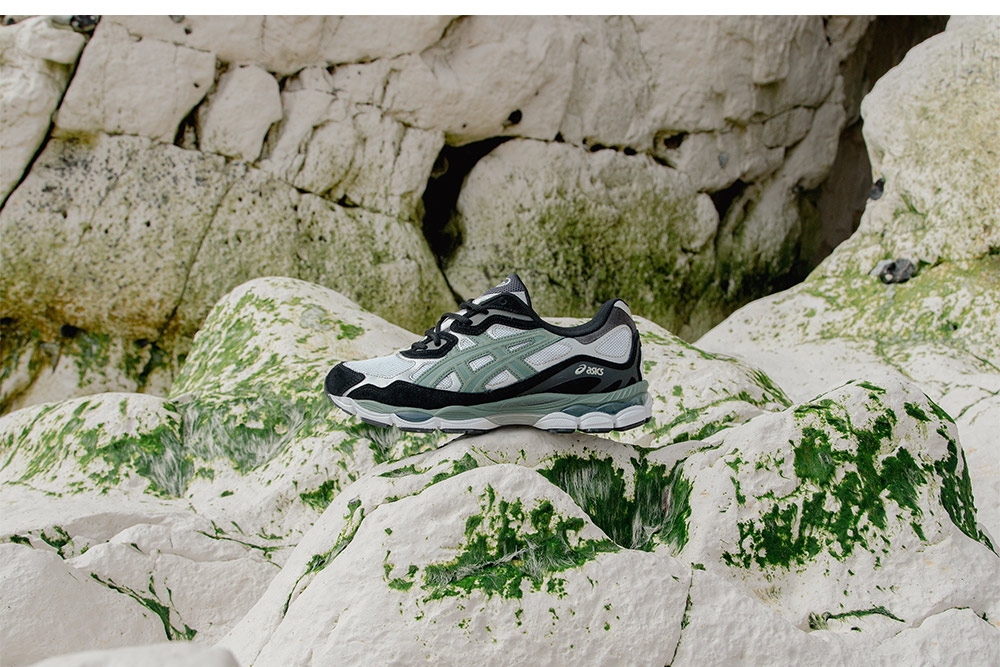
Within the world of sneakers, there are two things that don’t need introductions… The first being, the Air Jordan 1 and the second, is of course the iconic Chicago colour way.
In recent years, many collaborators have been allowed to bring their own takes to the silhouette however, not quite so many have been allowed to tamper, and reimagine the Chicago colour palette however, in line with the upcoming ‘Spider-Man: Across the Spider-Verse’ film set to release in June, the franchise gets to follow up with its 2018 launch, ‘Origin Story’.
Take a closer look below and make sure to get your entries in to our in-store and online draws!
PLEASE TAKE TIME TO READ THE BELOW!
The London in-store draw is now CLOSED!
To enter, you’re required to sign up via the above forms, these WON’T be available in-store to sign up on.
All online draws will be hosted over on the Footpatrol Launches App, click here to download!
In-store winners will be contacted via email informing them of their win. Within this email, winners will be given a set of dates in which they must collect their win from our London store. To collect, you will need to provide the winning email and a valid photographic government ID matching the winners name. NO ONE can collect on the winners behalf. Failure to provide this, or failure to collect within the given dates will mean failure to purchase your win.
To sign up to the Online draw, you will need to download the Footpatrol Launches app and complete a pre-authorisation payment of the retail price of the product plus shipping costs. This will be held until draw completion. Those successful will have their win posted out to the address entered during sign up. Those unsuccessful will see a return of their funds, this can take up to 5 working days from when the winners have been drawn. The draw is limited to one entry per household! Multiple entries will be cancelled!


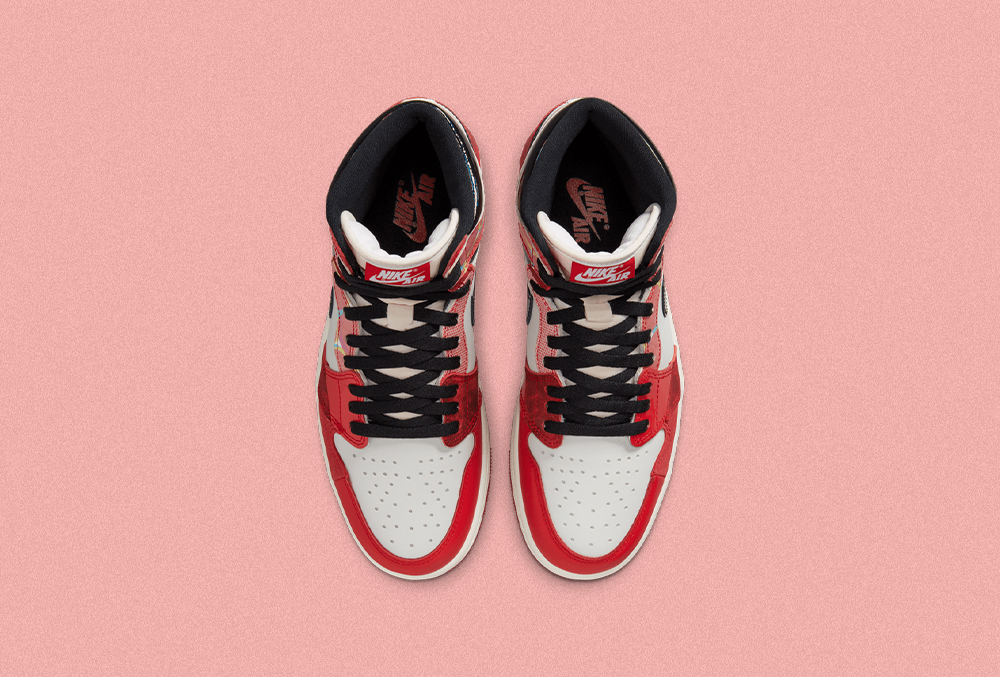

New Balance and running are two things that go hand in hand. Sponsors of marathons all over the globe, NB look to conquer all terrains with their latest trail running offering.
Originally launched a few years back, New Balance are now on to the third iteration of the Fresh Foam More Trail. The first thing to note is this runner is one that deceives the eyes. With a visually aggressive, highly stacked midsole, thanks to the use of the Fresh Foam its actually super soft, super cushioned yet keeping those supportive qualities.
To celebrate the launch of this latest runner, we took a few friends and family from the Footpatrol Run Club out into the East Sussex countryside to visit Tillingham Vineyard. Whilst here, we took to the local single track roads whilst exploring some of the green (and boggy) spaces the area had on offer… the perfect location for the More Trail. Plus, what’s a better combination than a spot of trail running finished with a wood-fired pizza and wine!
With a rugged outsole provided by the geniuses at Vibram, we switched from road to track, from dewy grass to boggy forest trails with ease.
Shop the New Balance Fresh Foam More Trail v3 online at Footpatrol here!

